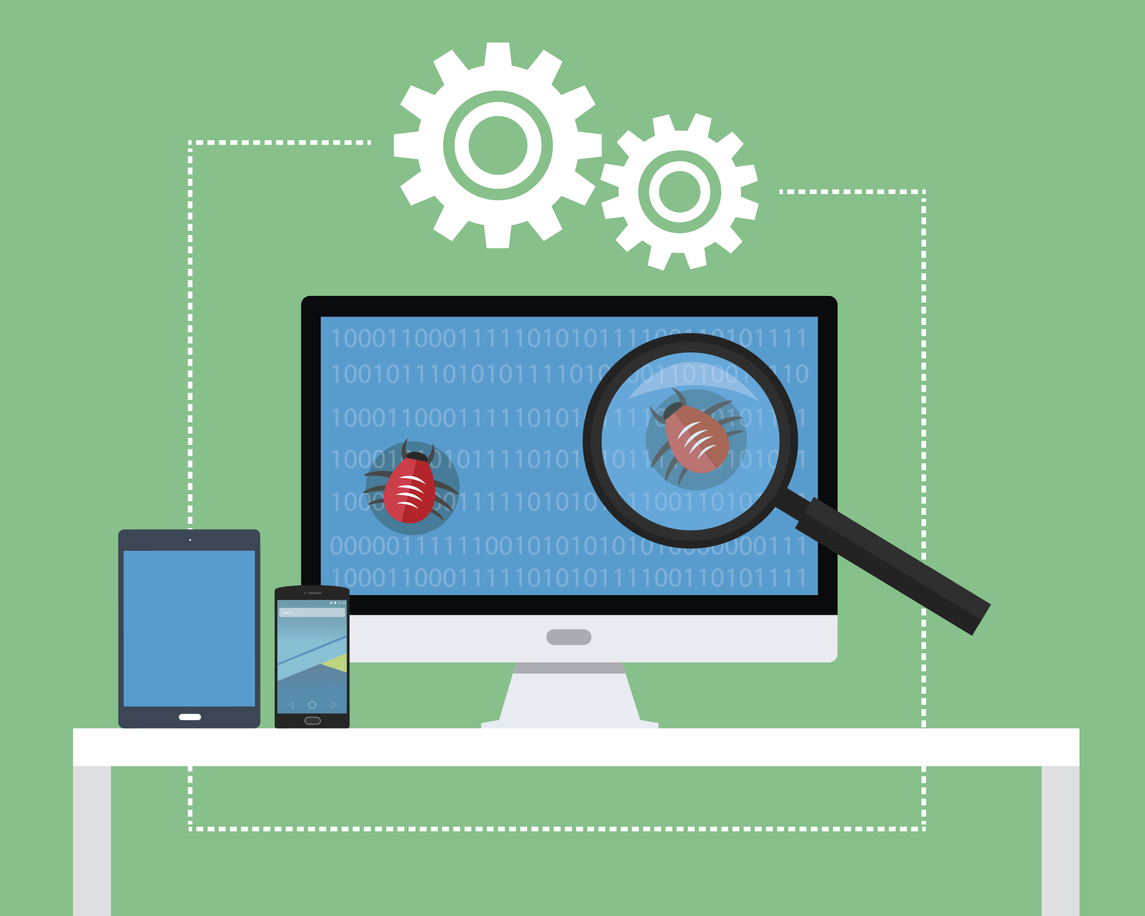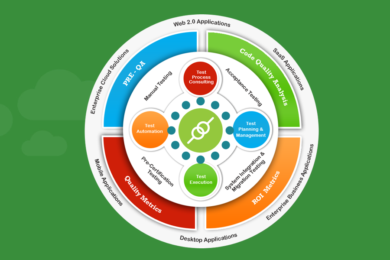“End-to-end User Acceptance Testing Services”
To Administer and Provide Validation for Your Software Product.

Start Improving Your Application! Find Relevant Bugs.
User Acceptance Testing (UAT) is that part of the testing cycle performed to verify that the delivered solution meets the business, user and performance requirements from the user perspective. UAT is typically the last stage of the testing process before releasing the software product to market.
The primary objective of UAT is to prove that the business process is satisfied by the delivered solution and all business processes will be exercised including batch, periodic and scheduled processes from end-to-end. Reconciliation of records, record content, values and volumes will also generally be undertaken to ensure that, especially in financial applications, nothing has been lost and functionality has not been adversely affected by release of the new or updated version of the software (unless it is designed so to do).
At KiwiQA, we offer a wide range of User Acceptance Testing Services to effectively check and provide quality assurance for your implemented software systems. Our professional QA analysts perform high-quality acceptance testing in a dynamic UAT environment, applying the best and most advanced test tools and methods, as appropriate.
Benefits of User Acceptance Testing
Unlike other software testing processes, UAT benefits everyone connected with the software solution, including the vendor, engineering team, stakeholders, testers, and end users. Here are some benefits realized by User Acceptance Testing:
-
- Client satisfaction increases as UAT provides increased confidence that the software will work as required in environment which reflects reality as closely as possible.
- By the time that UAT takes place, the testers involved in the cycle will know the solution in depth and will understand what is required of it.
- The vendor and client have a final opportunity to work together to ensure that business will be supported by the solution once it is released.
- UAT is the final check of the solution prior to implementation. It is the last opportunity for issues to be identified and managed.
- UAT provides an opportunity for the end user to understand the upcoming release in more depth prior to its implementation.
- Final training and documentation needs can be fulfilled before the solution is released.
Our Workflow for User Acceptance Testing
Our entire process of user acceptance testing can be divided into 6 phases:
1. Business Requirements Analysis
In the first phase the business requirements are analyzed by studying documents such as the:
- Project charter.
- Process execution diagrams.
- Business Requirements Document (BRD).
- System Requirements Specification (SRS).
2. UAT Test Plan Creation
Here, we outline the strategy that will be used to verify that a system meets the business needs.
3. Test Scenario and Test Cases Identification
Test scenarios are identified and the test cases are created with clear test steps. We ensure that the test cases sufficiently cover the maximum, pragmatic, testabe UAT scenarios.
4. Test Data Preparation
Where available, live data will be used for UAT. To alleviate security and privacy concerns, data may be obfuscated to ensure that there are no legal breaches during testing. If live data is not available, due to privacy or security concerns, data may be generated either manually or programmatically. In some instances, data used during previous testing cycles may be used. The business end-user will be involved in the definition and preparation of test data to be used during UAT to ensure that it adequately represents reality for the business process.
5. Running Test Cases and Recording Results
Test cases are executed, and the deviations from expectation (if any) are reported. Re-testing is performed for any bugs identified once they have been fixed. Appropriate Test Management tools are used for execution and documentation of tests and defect management.
6. Business Objectives Confirmation
Ideally, the end-user is involved in the planning, execution and reporting of UAT. However this is performed, in agreement with the customer, all reporting will be provided to the customer for review and formal sign-off.
Our User Acceptance Testing Services
At KiwiQA, we offer an extensive range of User Acceptance testing services including:
-
Alpha and Beta Testing
Alpha testing is generally performed in a development environment long before software is released to customers. Beta testing, or field testing, is usually performed in the users’ environment. KiwiQA offers both alpha and beta testing for your software products to give your users a seamless experience.
-
Regulation Acceptance Testing
This type of User Acceptance Testing verifies that the software product complies with legislative, governance and industry standards, as appropriate, which will have been identified in the Testing Strategy and Planning stage. KiwiQA offers thorough Regulation Acceptance Testing to ensure your product is legally and ethically fit to be released to market.
-
Contract Acceptance Testing
Contract Acceptance Testing is performed to check if the developed software meets the specifications and criteria defined in an agreed contract or agreement. KiwiQA offers complete Contract Acceptance Testing to make sure that developed software has been designed according to the specifications mentioned in the contract.
-
Operational Acceptance Testing
We offer quality-rich Operational Acceptance Testing to make sure there are appropriate workflows readily available for the software to be easily used by the consumers.
-
Black Box Testing
Although Black Box testing is usually considered as Functional testing, certain principles of this type of testing are applicable in User Acceptance testing as well. We frequently use Black Box testing for our UAT efforts.
Why To Choose Us for User Acceptance Testing?
KiwiQA is an acclaimed User Acceptance Testing Company offering a number of reasons why you should choose us:
-
- We use the best practices based on industry standards to render top-quality User Acceptance testing.
- Our well-trained and highly experienced in-house testers have in-depth knowledge in the latest trends and methods of User Acceptance testing.
- With our User Acceptance Testing Service, you can obtain a high return on your investment.
- Our testing teams can provide the discipline and testing knowledge needed to supplement your business testers to ensure a better outcome.
Outsource User Acceptance Testing Services
Outsourcing testing to independent third parties is a highly effective and efficient strategies for businesses to improve throughput, quality and speed to market. Outsourcing User Acceptance testing can provide access to some highly-experienced and skilled testers who can deliver world-class results for your business. When paired with your in-house business SMEs, there is an unbeatable team created to deliver the highest quality.
At KiwiQA, we work with all types of businesses to help them with their User Acceptance testing. Our expert testers perform all types of UAT services, leveraging the most advanced tools, methods and technologies to ensure excellent software products. Connect with us right now to learn more about our services and how we can help your business.
Frequently Asked Questions
What Is The Purpose Of UAT In Software Development?
The primary goal of UAT is to determine if the software is capable enough to handle all real-world tasks and perform as per the development specifications. Within UAT, the users will be given the opportunity to interact with the application or software before it is released officially. It is to detect any overlooked flaws!
Which Types Of Defects Do UAT Primarily Focus On?
Some of the defects upon which the UAT focuses on priority are:
- UAT is concerned with validating the functionality, compliance and usability of the software as per user requirements.
- It reveals any last-moment functionality hassles that the system has, which need to be fixed before it goes live.
- The fitness of the application or software product is validated as per the demands of the client.
Why Is User Acceptance Testing Important For Software Projects?
UAT is important for all software projects because it helps demonstrate whether the necessary business functions are in operating condition or not. Moreover, the validation is taken through an assessment with respect to real-world usage or circumstances. If the outcome isn’t achieved as per expectations, it will be documented and returned to developers for a fix.
Does UAT Happen Before Or After System Testing?
UAT is accountable as the last phase of all software testing approaches. It is performed right before the tested application or software product is launched live. The primary goal of UAT is to ensure there are no last-moment flaws that will break down its functionalities upon real-world usage.
Can UAT Be Performed For Any Type Of Software?
Yes, UAT can be performed on almost all types of software, including web apps, enterprise software, custom software, SaaS software, mobile apps and others. The approach and test case might be different, but the importance of it is the same for all types of apps.
Interested In Our Case Study?
Testimonials
We look forward to engaging KiwiQA again whenever we have future testing or contracting requirements. We truly appreciate Nitin’s excellent work and your continued support.
KiwiQA will be our first choice for any future QA needs. Thank you for your outstanding partnership.
It’s been a pleasure working with the KiwiQA team. Your responsiveness to feedback and ability to make timely adjustments is greatly appreciated. You’ve quickly adapted to our ways of working and have been proactive in raising questions whenever there were issues or uncertainties.
Overall, the experience has been very positive, and we truly value the collaboration
I wanted to personally thank the KiwiQA team for their outstanding efforts in testing Phase-1 of the WhatsApp Chatbot feature for RCloud. Keep up the fantastic work!
I want to express my gratitude to you and the entire team once again for all your hard work. I also want to take a moment to acknowledge the team’s dedication, flexibility, and the fantastic results we’ve seen so far. Great job!
Collaborating with KiwiQA has been pivotal for our fintech platform, Shukur. Their meticulous attention to detail and professionalism throughout the QA process is truly exceptional. With their expertise, every facet of our platform underwent rigorous testing, ensuring no issues slipped through the cracks. We’re immensely thankful for KiwiQA’s unwavering dedication to quality assurance. Their contribution has been invaluable, and we wholeheartedly endorse their services to anyone seeking top-tier QA support.
Niranjan & the Kiwi QA team have been excellent. They have a high quality team who has demonstrated great ownership, hustle and have maintained a high quality bar that’s akin to the top tech cos. such as Flipkart etc. Would highly recommend KiwiQA.
KiwiQA is a premium provider in this QA space and I highly recommend their services.
Niranjan and KiwiQA team have been extremely professional and thorough in testing our new platform. I’d have no hesitation to use team KiwiQA again! Couldn’t speak more highly!
KiwiQA provide high quality support at a very reasonable price. Their penetration testing on our platform was very thorough and provided us confidence in the cyber security of our system. I would recommend others to use KiwiQA.
It was a very good cooperation. Thanks to KiwiQA Services’ excellent reporting and risk assessment, we were able to fix existing vulnerabilities effectively. I’m happy with the quality of their evaluation.
They delivered exactly what was promised, which was a full security report for our system.
We use KiwiQA for our large custom projects. One of our customs sites their normal flow of automation testing was not going to work. They quickly found and implemented a solution. KiwiQA is very detail-oriented and has great communication. They are a pleasure to work with.
We have been working with KiwiQA for several years and really come to rely upon them. They have a terrific team of people, and I rely on them to do a thorough job.
The experience has been very positive and the relationship has grown exponentially. They are willing to put in the time and effort in their communication and quality. This company is highly recommended for developmental purposes.
Thank you for your team’s help and support.
Thanks for your services for load testing.
Firstly just wanted to say, both Andrew and I are impressed with what you have accomplished in QA, great work.
KiwiQA team are at the top of their game in the Software QA space. They are diligent, thorough, prompt and flexible, exactly the kind of support we have always needed. I would highly recommend KiwiQA to any organisation needing software QA and testing support.
I have worked with KiwiQA few times for Web and Mobile app performance testing and they have always delivered as per our expectations. I would recommend their services to whoever is looking for right QA partner for their tech projects.
When it comes to outsourced testing, this is the team I will go again and again. Ability to hunt down all the defects, no matter how obscure.Having a thorough defect report significantly increases the resolution speed.
Excellent QA Team – very thorough, and provides great feedback on what is being done. Very willing to work in a way that best suited us. Definitely an expert in JMeter, which was exactly what we needed…
I hired KQSPL team for an initial review of a website across different/browsers and operating systems. Very quick response, and professional outcome. We are considering them our QA partner
KiwiQA has provided us the quality assurance testing that SimpleTix needed. Today we can ensure we are shipping out each release bug free. SimpleTix plans to grow 10X this year and we’re glad to have KiwiQA with us.
I appreciate your Good work on NetSafeLite project. All the reports and details were impressive for various mobile device testing. Please continue the same.
Reviewed the load testing results and they look very positive and promising. Thanks for the good work.
I have used KiwiQA for several projects from enterprise up-to personal, They tested my software with their professional hands which make my software & websites become more pro and excel.
Thank you KiwiQA
Congratulations to everyone in KiwiQA team who has worked hard to bring our “The Legend of Viraz” developed Game product in market with sustainable QA.Everyone in KiwiQA deserves to be very proud of the excellent solution in Game QA and Testing work and the way that the team has pulled together to get game Bug Free. Well Done!!.
We are very pleased with our ongoing business relationship with KiwiQA Testing Services Division. KiwiQA has a localization team that has proved invaluable to us.
The performance & recommendation was achieved. Excellent work for Load and Performance testing using JMETER, on time and well delivered.
KiwiQA is professional testing company and always available for testing all aspects of an application with best tools.
KiwiQA did a phenomenal job for us. We used them for manual testing and test automation(selenium). They excelled at both because unlike other shops they just focus on QA – that’s their core ! They are fun to work with and are comfortable working across timezones. I would recommend KiwiQA for big and small orginzations alike.










